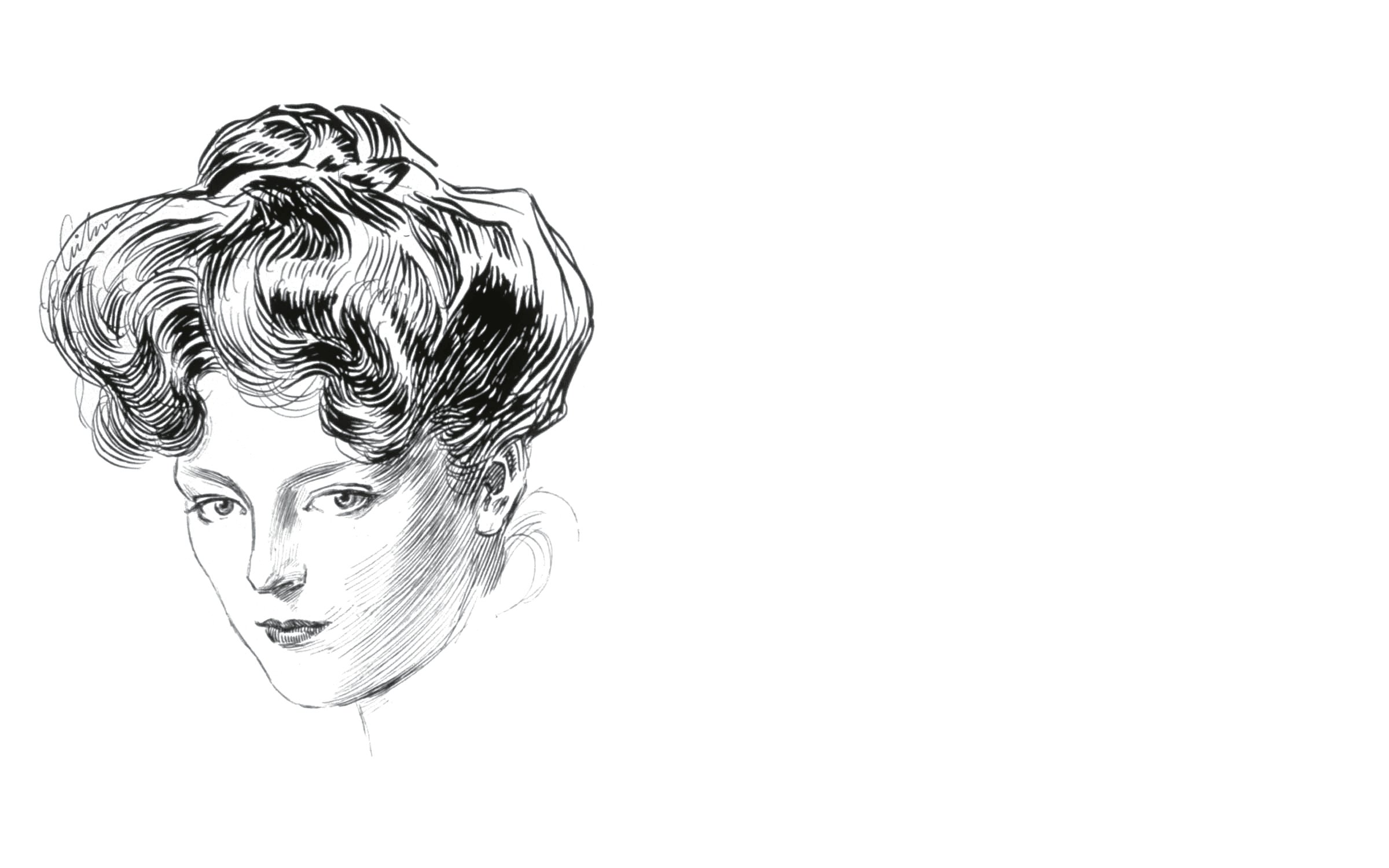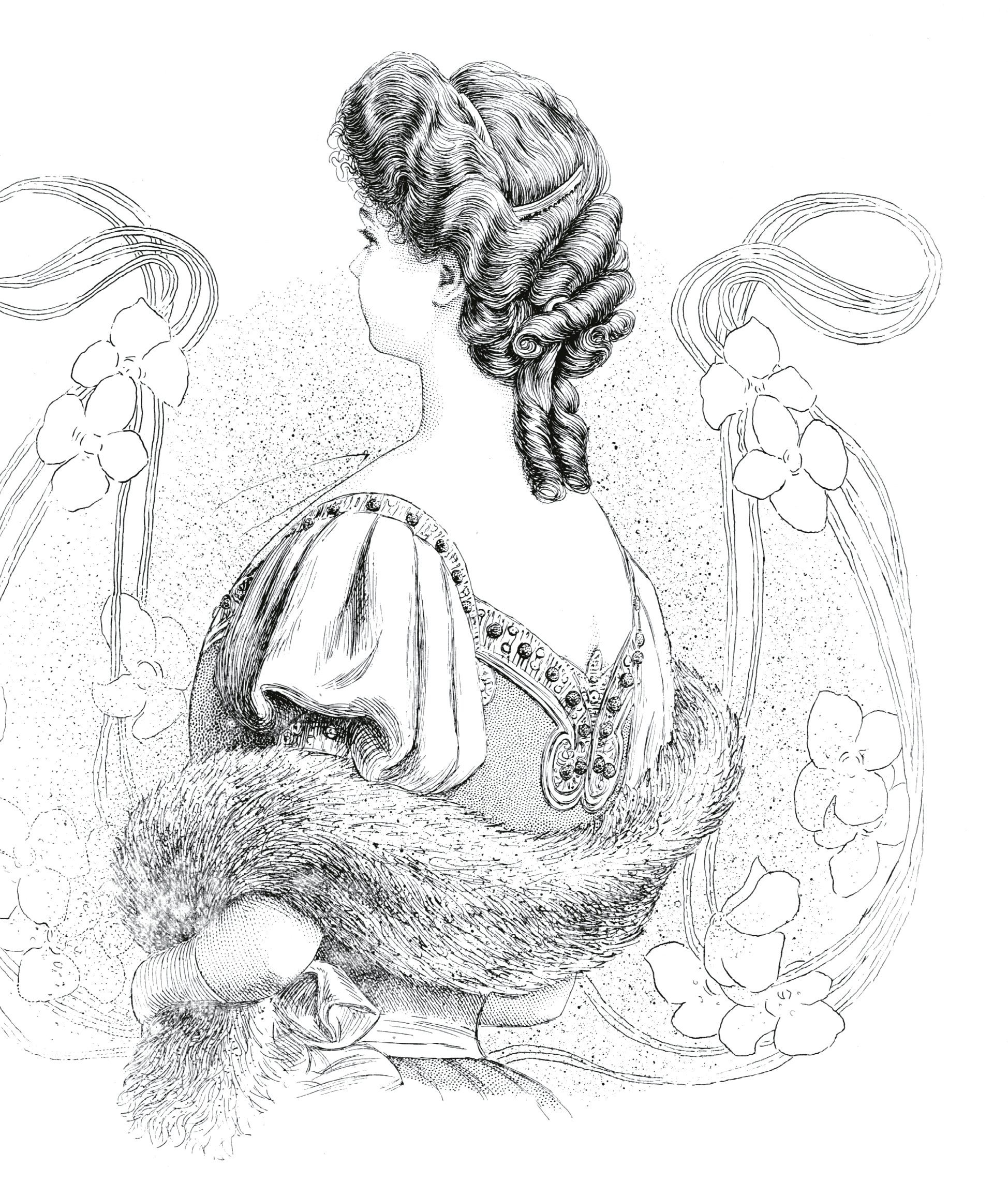The popular hairstyles during the first decade of the 20th century were heavily influenced by Paris fashion. Interestingly enough, as clothing got smaller, hair got bigger. Volume was the theme throughout the period, regardless of hair length. From the idealized beauty of the Gibson girl to the huge pompadours worn under enormous and elaborate hats, the Edwardian era was marked by big, full hair.

The Gibson Girl
The Gibson Girl, created by artist Charles Dana Gibson who first featured her in his illustrations for Life magazine, was the turn-of-the-century cultural touchstone for women. Her signature style was a fitted skirt and blouse with billowing sleeves, bedroom eyes and a voluminous mound of wispy hair pulled up into a knot on the top of her head. The image of the Gibson girl had mass appeal, and cut across class and ethnic boundaries. The upper crust associated her with her charming and good-looking creator and took delight in her many adventures, while the working-class identified with her unconventionality, her ability to stir up trouble and her reluctance to “put on airs.”

The Pompadour
The signature hairstyle of the time was the pompadour, named after the Marquise de Pompadour, infamously known as Louis XV’s mistress in the mid-1700s. Characterized by a high, rounded shape which curved away from the head, hair could be straight or have a wave or curl. In order to achieve this voluminous shape, hair was backcombed, or supported by either a wire frame or a matted pad. Most pads were made of horse hair or fabric, and by the end of the decade, synthetic hair had gained popularity due to advancements in chemistry. The popularity of the pompadour also fueled the craze for hair dying. Beauty writers emphasized that dark hair should be worn smooth and flat while lighter hair should be worn more loosely with soft waves and curls, many women tried to lighten their hair using natural products like herbs and lemons or with some of the new hair dyes hitting the market.

Marcel Waves
The Marcel Wave was in vogue, and women had their curling irons in the fire. From soft, fuzzy edges on the fringe to curls along the nape of the neck, this waved styling technique was far more economical and less time-consuming than a permanent wave, which would take at least six hours to complete. Named for the French hairdresser, Francois Marcel, who invented the heated tongs, the style continues to make waves even today.